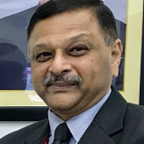Act before it is too late
4th February 2010, marks a significant day for Indian linguists. This was the day a lady named Bo passed away in the Andaman Islands. Why was this important? Well, she had been the last person alive to speak the language “Bo”. With her passing, the language became extinct.
According to experts, this ancient tribal language had a link to one of the oldest cultures of the world. As an expert remarked, “a unique part of human society is now just a memory” (Stephen Corry Survival International).
“Sadly, along with her, the continuous line of wisdom of 65,000 years was also gone,” commented another expert linguist (G.N.Devy, Bhasha Research and Publication Centre).
Another expert laments, “… Boa Sr’s death was a loss for intellectuals wanting to study more about the origins of ancient languages because they had lost “a vital piece of the jigsaw” (Anvita Abbi, Vanishing Voices of the Great Andamanese).
India is home to the largest number of languages. The Census 2011 captured 1369 languages returned as mother tongues. Each one of these languages is a part of our rich cultural heritage and every time we lose a language; we lose part of our heritage. It is of utmost importance that steps be taken to preserve and document our historical legacy.
The Linguistic Survey of India, conducted by Sir George Abraham Grierson, an Irish philologist is considered a seminal work in linguistics, the world over. It was conducted between 1894 and 1927 in what was then referred to as British India. The survey result covered 179 languages and 544 dialects and was published in 11 volumes. It is a matter of regret that no credible work on the scale that Grierson achieved had been taken up at a national level since then.
The Census of India has been carrying on the unique task of bringing to light, the number of languages spoken in the country after each decadal Census. It has also brought out several publications dedicated to the linguistic survey of Indian languages. A dedicated organization called the Language Division located in Kolkata has been doing this task admirably.
One of the efforts taken up in the period 2007–2012 was a project to identify the unclassified mother tongues of Census 2001. This project identified and classified 541 out of 1957 unclassified mother tongues returned in the Census 2001.
Determined to approach this problem from a different angle, I decided to constitute an expert body comprising of eminent linguists of the country and various institutions like the Central Institute of Indian Languages and the Anthropological Survey of India.
After detailed deliberations, this panel of experts came up with a questionnaire comprising of 1557 words, 525 sentences and 1 free discourse. This standard instrument would be used across all field surveys.
To increase the size of the representative sample, it was decided that data collection would be done from at least 8 speakers of a mother tongue. To control variability the sample would comprise subjects by age (old/young), gender (male/female) and geography (rural/urban).
As the availability of trained linguists was a major constraint, it was resolved to carry out data collection using trained laypersons. Full videography of the data collection process would be done. The video clips would be sent to trained transcribers. The videos would also be preserved for future use. The transcripts would be sent to Linguists for analysis and report. The entire process would be supervised by senior linguists in eminent universities and institutions.
The new process introduced standardization in data collection across the country. As non-technical persons could be deployed, it speeded up the process substantially. The need now was to introduce automation to ensure a smoother process flow.
After several sittings with a technology firm, we came up with software that would ensure an end to end automation of the process. The first step was the allocation of a language to the survey team. Once this was done, the details were logged into the system and displayed on a dashboard. This gave us a real-time picture of the field survey.
Once the field survey was completed, the video recording was received at a central location and checked for quality issues. Once certified, the video was sent for further processing.
The next stage of the process involved snipping the video into smaller bits and dispatching it electronically to the transcribers. Transcribers were students of linguistics or laypersons trained for the purpose. As this work could be done anywhere and at any time, a large pool of transcribers could be accessed. The snipping process also gave us scope to overcome the problem of low bandwidth.
A queuing process was introduced wherein a particular transcriber was allocated fresh work only after she/he had completed the work already allocated. Thus, the next parcel of the video clipping was sent to a transcriber was dispatched only after she/he had completed the earlier parcels. The transcription was checked by linguists and cleared for quality. On acceptance, payment was activated by the system. This productivity linked payment proved very effective.
Once all the video parcels of a particular language were completed, the transcripts were sent to the expert linguists for analysis and report. This is also system driven.
The present status is that fieldwork (videography) of 576 Mother Tongues in 32 States/UTs has been completed. Out of this, 513 Mother Tongues have been analysed and completed in all respects.
Outcomes have not fully matched expectations. The quantitative or qualitative level that a modern pan-India Linguistic Survey has not yet been reached. A definite beginning has, however, been made. Early results show that the methodology is effective. The rich linguistic heritage of the country has to be preserved and showcased. It is distressing that many languages in India are dying out. The need of the hour is that the gains made so far should be consolidated and efforts doubled to take the project to its logical conclusion before it is too late!
